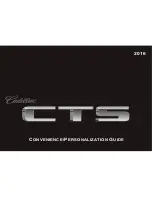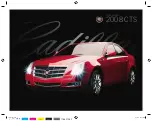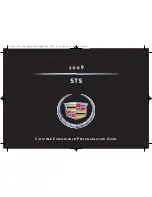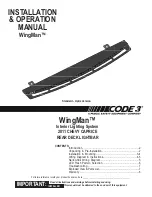
ation is possible using the switches in the
rear compartment.
Pets in the vehicle
G
WARNING
If you leave animals unsupervised or unse-
cured in the vehicle, they may push a button
or a switch, for example.
They could:
R
activate vehicle equipment and become
trapped, for example
R
switch vehicle systems on or off, thus
endangering other road users
In the event of an accident, sudden braking or
abrupt changes of direction, unsecured ani-
mals could be flung around the vehicle, injur-
ing the vehicle occupants. There is a risk of an
accident and injury.
Never leave animals unattended in the vehi-
cle. Always secure animals correctly during a
journey, e.g. in an animal transport box.
Driving safety systems
Driving safety systems overview
In this section, you will find information about
the following driving safety systems:
R
ABS (Anti-lock Braking System)
(
Y
page 77)
R
BAS (Brake Assist System) (
Y
page 78)
R
BAS PLUS (Brake Assist System PLUS) with
Cross-Traffic Assist (
Y
page 78)
R
COLLISION PREVENTION ASSIST PLUS
(distance warning function and Adaptive
Brake Assist) (
Y
page 80)
R
Adaptive brake lamps (
Y
page 83)
R
ESP
®
(Electronic Stability Program)
(
Y
page 83)
R
EBD (electronic brake force distribution)
(
Y
page 86)
R
ADAPTIVE BRAKE (
Y
page 86)
R
PRE-SAFE
®
Brake (
Y
page 87)
R
STEER CONTROL (
Y
page 89)
Important safety notes
If you fail to adapt your driving style or if you
are inattentive, the driving safety systems can
neither reduce the risk of an accident nor
override the laws of physics. Driving safety
systems are merely aids designed to assist
driving. You are responsible for maintaining
the distance to the vehicle in front, for vehicle
speed, for braking in good time, and for stay-
ing in lane. Always adapt your driving style to
suit the prevailing road and weather condi-
tions and maintain a safe distance from the
vehicle in front. Drive carefully.
The driving safety systems described only
work as effectively as possible when there is
adequate contact between the tyres and the
road surface. Please pay special attention to
the notes on tyres, recommended minimum
tyre tread depths etc. (
Y
page 416).
In wintry driving conditions, always use winter
tyres (M+S tyres) and, if necessary, snow
chains. Only in this way will the driving safety
systems described in this section work as
effectively as possible.
ABS (Anti-lock Braking System)
General notes
ABS regulates brake pressure in such a way
that the wheels do not lock when you brake.
This allows you to continue steering the vehi-
cle when braking.
The yellow
!
ABS warning lamp in the
instrument cluster lights up when the ignition
is switched on. It goes out when the engine is
running.
Important safety notes
i
Observe the "Important safety notes" sec-
tion (
Y
page 77).
Driving safety systems
77
Saf
ety
Z
Summary of Contents for E-Class Estate
Page 2: ......
Page 3: ......
Page 5: ......
Page 33: ...30 ...
Page 123: ...120 ...
Page 179: ...176 ...
Page 277: ...274 ...
Page 343: ...340 ...
Page 344: ...Useful information 342 Stowage areas 342 Features 360 341 Stowing and features ...
Page 379: ...376 ...
Page 380: ...Useful information 378 Engine compartment 378 Service 384 Care 385 377 Maintenance and care ...
Page 417: ...414 ...
Page 494: ...491 ...
Page 495: ...492 ...
Page 496: ......
Page 497: ......
















































